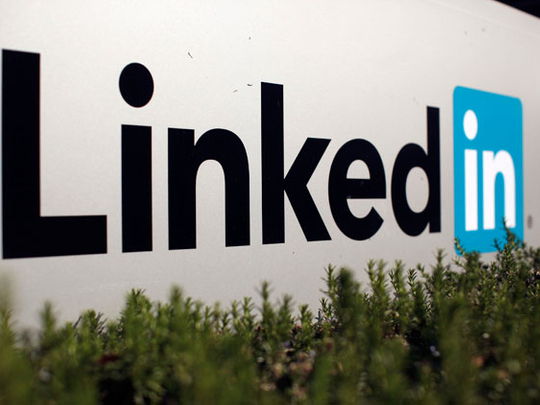
Dubai: Close to 50 per cent of traffic on LinkedIn within the Middle East and North Africa comes via the mobile platform, thus representing one of the fastest growing categories among competing devices.
“Mobile is growing around threefold over desktop,” Mike Gamson, senior vice-president of International Business.
A further boost to traffic on the mobile platform could come from the upcoming releases of new and specifically tailored applications.
In the third quarter, LinkedIn membership rolls rose 28 per cent to 332 million globally, while unique visits grew 16 per cent compared to 13 per cent in the second quarter.
Member page views grew 28 per cent from 22 per cent in the previous quarter. Of the overall membership, 13 million are from the Middle East and North Africa territory, including one million-plus from the UAE.
“There are 600 million professionals and around 140 million students globally and that is where we look as our primary market,” said Gamson. “We are half-way through; the vision is bigger than the mission and that is to create economic opportunity for every member of the more-than-three billion global [workforce].
“We like to add value for large and small corporations. The first is helping them to find the best talent in the world. The second is helping to market, whether it is a product or churn a story out to the world because the platform can communicate with different members and share content that is relevant.” The ultimate dream is to develop the world’s first economic graph similar to Facebook’s social graph. The concept is to create a digital artefact of the global economy by identifying the connections between people, jobs, skills, companies and professional knowledge and spot in real-time the trends pointing to economic opportunities,” he said.
“It’s a big vision and probably we will be working on it for the next 10 years or so,” Gamson said. “We are well on the way and our intention is to create digital profiles for the 600 million professionals and more than 3 billion workers. It is going to be the same for companies also. We have more than four million out of the 70 million companies on our platform today.”
A year ago, there were 350,000 jobs available worldwide but now “we have more than two million jobs. It is the same with educational skills and educational institutions. If we can put all these pieces together, then we can open it to the world to fuel global economy,” he said.
The company makes close to 60 per cent of its revenue from the talent solutions business, its tool for recruiters, and 20 per cent from marketing solutions, its advertising business. In this region, talent solutions provide much more than the global average.










